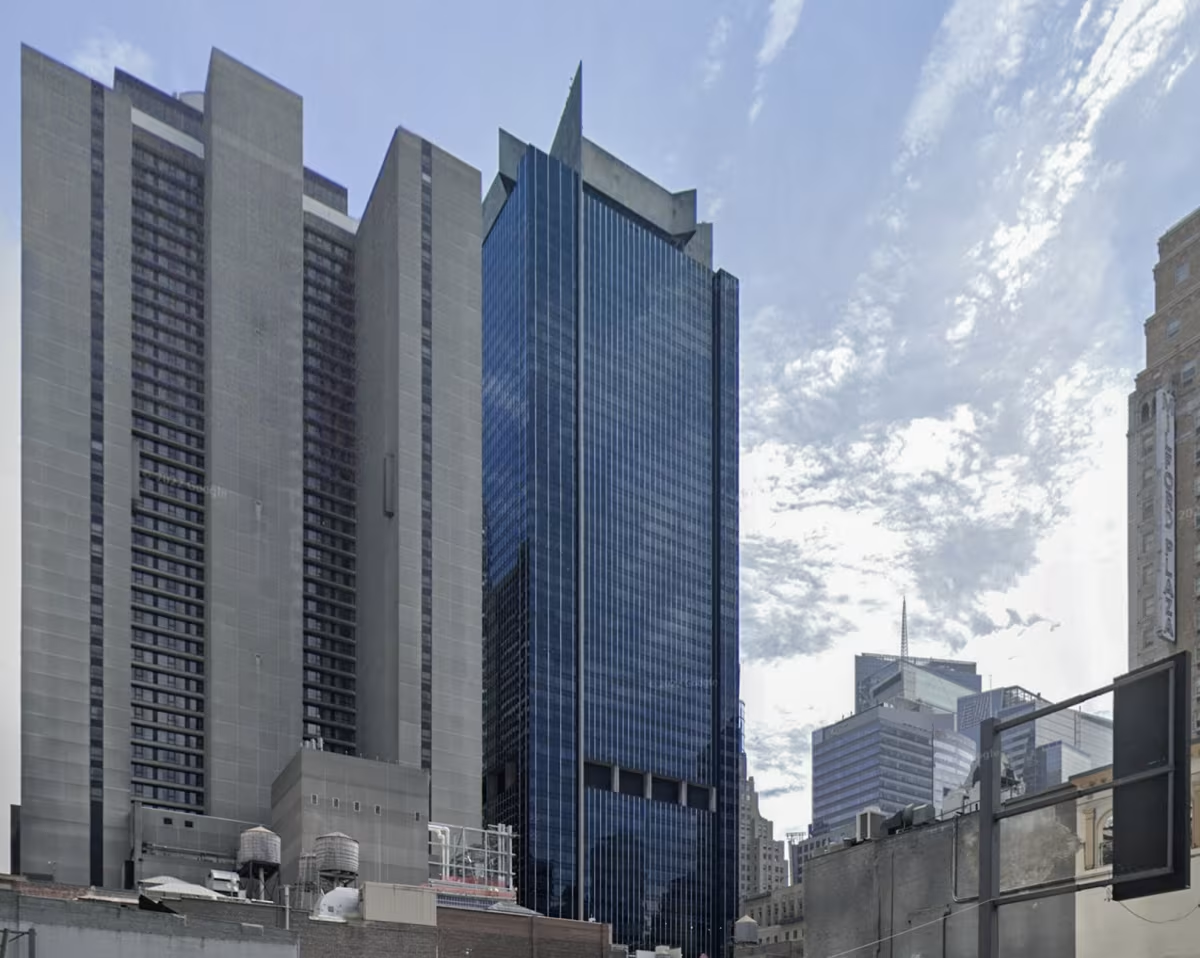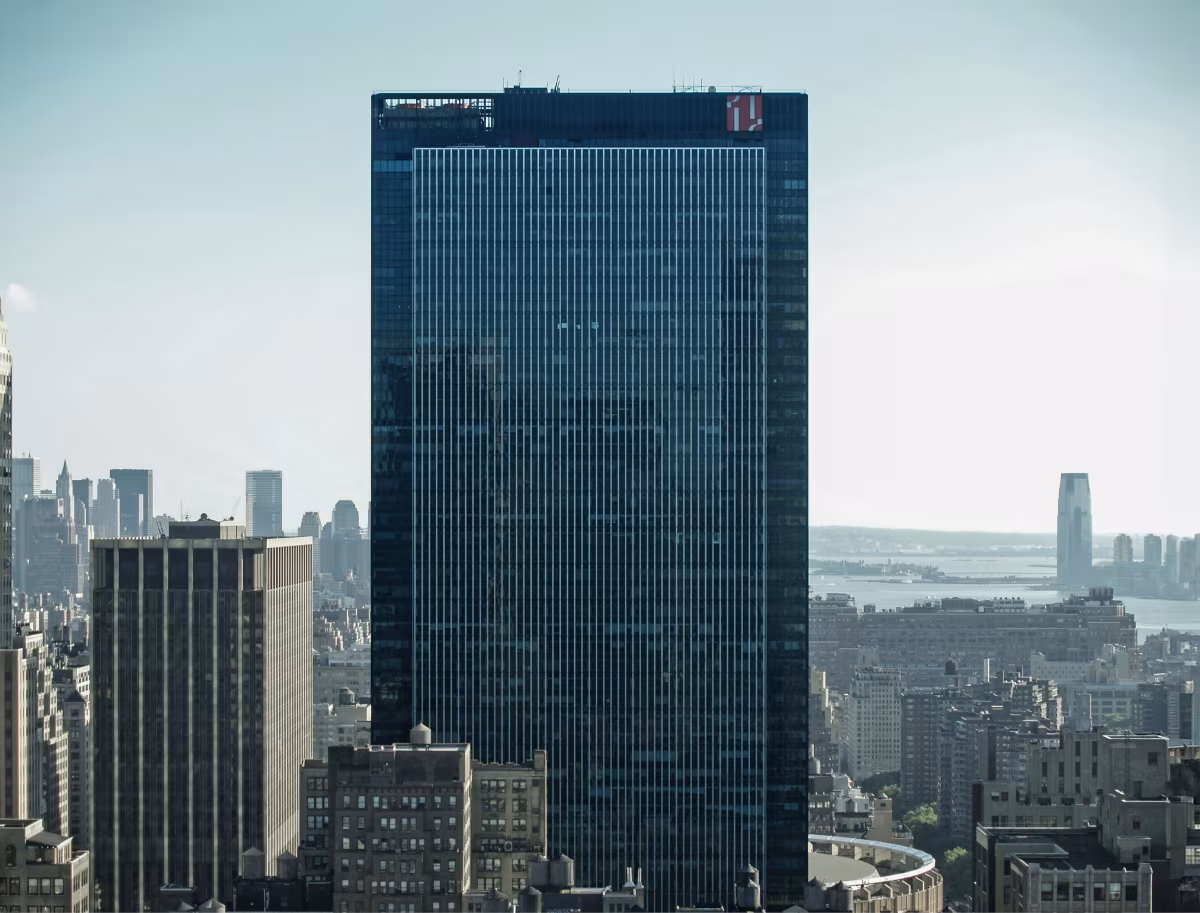One Astor Plaza vs One Penn Plaza


Comparing the One Astor Plaza and the One Penn Plaza is especially interesting because they share much in common. Both rise in New York, NY both were designed by Kahn & Jacobs, and they were completed in the same year.
This overlap gives us a unique opportunity to understand how Kahn & Jacobs approached different commissions in the same urban context and historical context during a short period.
Height & Size
The One Penn Plaza is clearly the larger tower of the two, both in terms of height and number of floors. It rises to 751ft (229m) with 57 floors above ground, while the One Astor Plaza reaches 745ft (227m) with 54 floors above ground.
One Penn Plaza also offers more total built-up area, a total fo 2,523,995 sqf (234,487m2), which is about 597,257 sqf (55,487m2) more than what the One Astor Plaza offers.
Of course, each project may have faced different briefs or regulatory constraints, which we don't really know about and could also explain the outcome.
Architectural Style
The One Astor Plaza was designed in the Modern style, while the One Penn Plaza reflects the principles of International Style.
Both towers were built when their respective styles were already past their prime. This makes them feel more like late continuations rather than groundbreaking statements, showing how architectural traditions can linger even as tastes shift.Uses
Both the One Astor Plaza and the One Penn Plaza were designed to serve as commercial towers, and that has remained their main use since their completion, serving similar roles in the urban fabric.
Both towers provide significant parking capacity, with One Astor Plaza offering 225 spaces and the One Penn Plaza offering 695.
Structure & Facade
The two towers rely on different structural systems, reflecting distinct engineering strategies.
The One Astor Plaza uses a Framed Tube In Tube structural system, which combines a strong central core with a perimeter tube of columns, while the One Penn Plaza uses a Frame system, that relies on a regular grid of columns and beams to sustain its weight.
Yet, when it comes to their facade, they both employed the same solution, a Curtain Wall facade.
A curtain wall is a non-load-bearing facade hung from the structural frame. It is anchored to floor slabs and transfers only its own weight and wind loads, allowing for sleek, glassy exteriors.
| One Astor Plaza | One Penn Plaza | |
|---|---|---|
| Kahn & Jacobs | Architect | Kahn & Jacobs |
| 1968 | Construction Started | 1970 |
| 1972 | Year Completed | 1972 |
| Modern | Architectural Style | International Style |
| Commercial | Current Use | Commercial |
| 54 | Floors Above Ground | 57 |
| 227 m | Height (m) | 229 m |
| 179000 | Built-up Area (m²) | 234487 |
| 36 | Number of Elevators | 44 |
| Framed Tube In Tube | Structure Type | Frame |
| Concrete And Steel | Vertical Structure Material | Steel |
| Concrete And Steel | Horizontal Structure Material | Concrete And Steel |
| No | Facade Structural? | No |
| Glass, Stone | Main Facade Material | Aluminum, Glass |
| Shmerykowsky Consulting Engineers | Structural Engineer | James Ruderman |
| NY | State | NY |
| New York | City | New York |
| 1515 Broadway | Address | 250 West 34th Street |